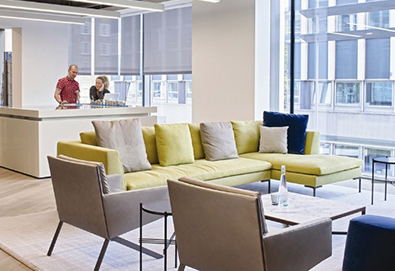Code Green Solutions


Looking at the data from our Head Office study at York House, it’s interesting to think what the effect on the marketplace will be of smartphones starting to introduce apps that put data relating to wellbeing at everyone’s fingertips – when people can easily check what air quality is like wherever they are, and see whether aspects such as lighting, temperatures and air pressure are optimised for their wellbeing.
Will occupiers’ HR teams and the people who work, shop and live in our places want closer links with building management teams? Will data relating to wellbeing and productivity play a greater role in leasing decisions? Will wellbeing rise even further up the agenda for architects and designers?
Before our refurbishment works started at York House, around 80% of our staff completed a survey on their perceptions of the office environment. Their views informed MoreySmith’s designs, increasing focus on areas such as lighting, facilities and air quality.
A follow up survey after the refurbishment reveals significant changes in perceptions, providing compelling evidence for the impact of the works on people’s sense of wellbeing and productivity.
In addition to the perception survey, we also positioned 18 sensors around the offices before the refurbishment works started to establish baseline data for environmental conditions that affect people’s personal comfort levels and wellbeing. These include humidity, lighting, noise, pressure, temperature and Volatile Organic Compounds (VOCs).
Here are the results of our comparison assessment.
The final aspect of our study involves analysis of human resources data to explore the potential financial impact of the office environment on aspects such as staff turnover, medical costs and days lost to sickness, as well as staff complaints to the facilities management team on temperature and lighting. We will be carrying out a comparison review of all these metrics at our financial year end.
Our York House study was informed by the World Green Building Council’s report, Health, Wellbeing and Productivity in Offices, which British Land helped to develop in 2014. It was carried out in partnership with the Monomoy Company. We are the first company to apply the report’s recommendations in this way, gaining insights and testing the framework for wider use across our portfolio. We have already commissioned further analysis in additional buildings.